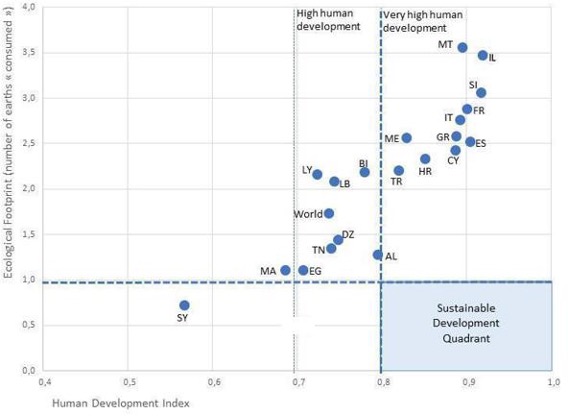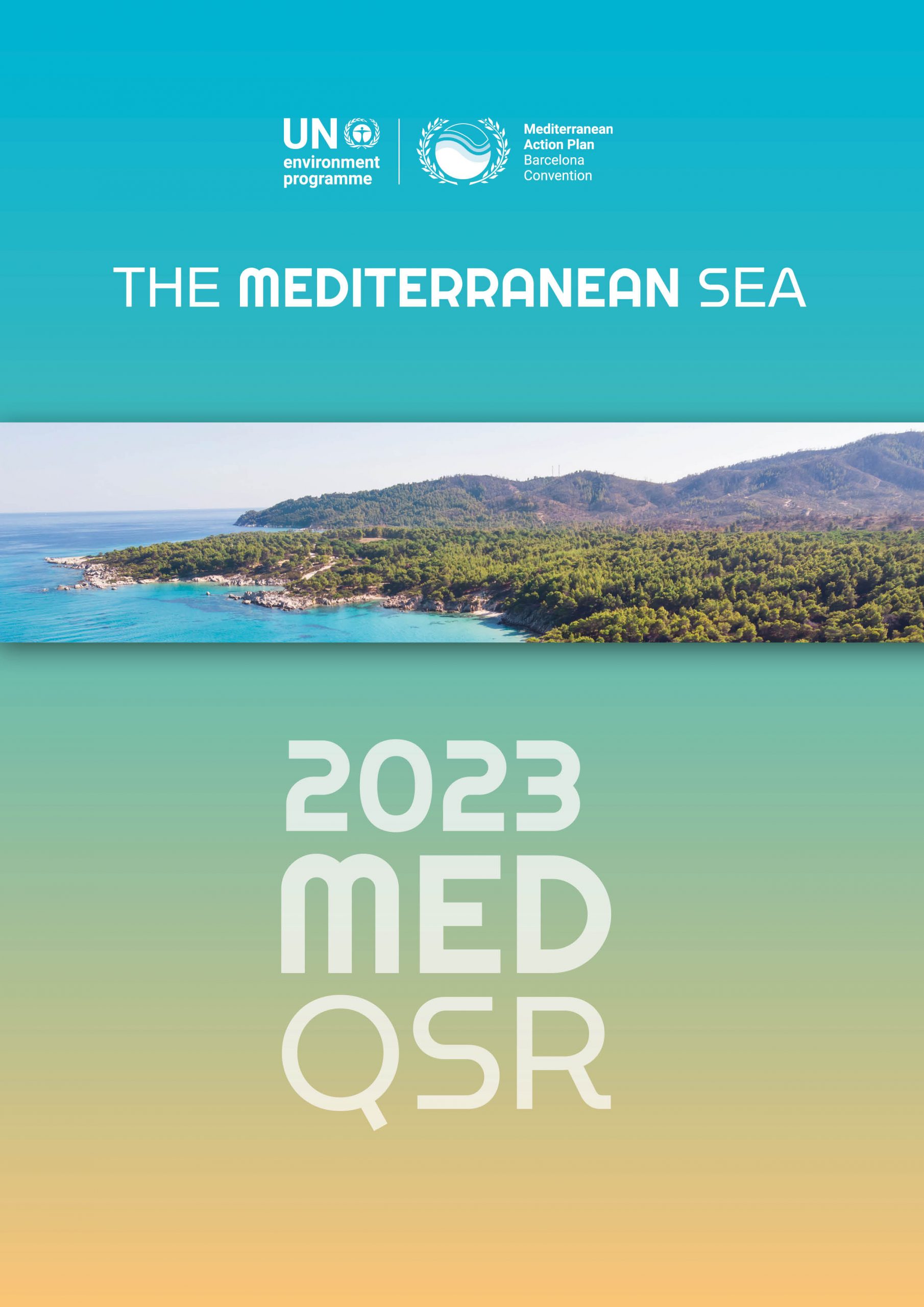2023 MED QSR WEB SITE INDEX

Environmental characteristics
The Mediterranean marine and coastal environment
32. The Mediterranean is a semi-enclosed sea located between Africa, Asia and Europe and is bordered by twenty-one countries. It is connected to the Atlantic through the Strait of Gibraltar, to the Black Sea through the Strait of Dardanelles, and to the Red Sea through Suez Canal.
33. Although representing only 0.82% of the surface area of all oceans, with a total surface area of about 2.9 million square kilometres, the Mediterranean is the largest enclosed sea on Earth. According to the Barcelona Convention, the Mediterranean Sea is “bounded to the West by the meridian passing through Cape Spartel lighthouse, at the entrance of the Straits of Gibraltar, and to the East by the southern limits of the Straits of the Dardanelles between Mehmetcik and Kumkale lighthouses”.
34. The Western Basin of the Mediterranean Sea has a narrow and fragmented continental shelf and a maximum depth of 2850 m, while the Eastern Basin is characterized by a relatively wide continental shelf, and it includes the deepest part of the Mediterranean (5267 m).
35. Apart from the coastal plains along the eastern Mediterranean coasts of Egypt, Libya and Tunisia, and the deltaic zones of large rivers (e.g., Ebro, Rhone, Po and Nile), the geomorphology of the Mediterranean coasts is characterised by an irregular, deeply indented coastline, especially in the north, and the presence of mountain ranges: the Atlas, the Rif, the Baetic Cordillera, the Iberian Cordillera, the Pyrenees, the Alps, the Dinaric Alps, the Hellenides, the Balkan, and the Taurus.
36. The most striking feature of the underwater geomorphology of the Mediterranean Sea is the presence of abrupt submarine canyons linking the coastal areas to the deep sea. They facilitate exchanges between coastal waters and deep waters and form essential habitats for several species by providing a place of refuge, nursery and export to the continental shelf for many species (fish larvae, decapods, cetaceans, etc.).

Socioeconomics Characteristics
Unsustainable consumption and production patterns are the main drivers of environmental change in the Mediterranean
62. Current consumption and production patterns in the Mediterranean are characterised by high resource consumption combined with low recycling rates and unsatisfactory waste management. They are unsustainable overall and lead to considerable environmental degradation in the Mediterranean region, including land take and degradation, water scarcity, noise, water and air pollution, biodiversity loss and climate change (UNEP/MAP and Plan Bleu 2020).
63. Achieving a high level of development is historically linked to environmental trade-offs. Figure 5 shows that none of the Mediterranean countries has both a high level of human development and an Ecological Footprint that lies within the planetary boundaries. The challenge ahead is to move all countries into the Sustainable Development Quadrant of the figure. Strategies to achieve this goal need to be differentiated: countries with a low Ecological Footprint and low Human Development Index (HDI) need to find solutions to increase HDI without increasing their Ecological Footprint. Countries with a high HDI and high Footprint need to find solutions to maintain high HDI but decrease their Footprint4.
4
4 Note that Error! Reference source not found. does not make indications about the state of the rule of law, respect of civil rights and equality, that should also be included in a measure of inclusive sustainable development and resilience
Figure 5: Ecological Footprint 2017 and Human Development Index (HDI) 2019 in Mediterranean countries.
Source: Graph by Plan Bleu, inspired by Wackernagel et al. 2017. Data from Global Footprint Network, 2021 and UNDP, Human Development Report 2020.

Regional
cooperation
176. The Barcelona Convention, adopted in 1976, was the first legally binding instrument for the environmental protection of the Mediterranean Sea. Its provisions and thematic protocols provided the legal basis for the progressive development of a wide framework for regional cooperation to which the Mediterranean countries and the European Union adhered.
177. In addition to its legal texts, the Barcelona Convention system has other consultation and cooperation frameworks adopted by the Contracting Parties to assist them and coordinate their efforts in implementing the Convention and its Protocols.
178. The Mediterranean Commission on Sustainable Development (MCSD): The MCSD is an advisory body to the Contracting Parties aimed at assisting them in their efforts to integrate environmental issues in their socioeconomic programmes and to promote sustainable development policies in the Mediterranean region and countries. Serving as a forum for experience sharing and peer learning, the MCSD is unique in its composition since it includes not only government representatives but also local authorities, socio-economic actors, non-governmental organizations, intergovernmental organizations, the scientific community and parliamentarians. All the Commission members participate in its deliberations on an equal footing.
179. The Contracting Parties also adopted a series of legislations, national and regional strategies and action plans aimed at guiding their efforts in addressing issue of relevance for the objectives of the Convention and its Protocols. These regional strategies and action plans offer various opportunities for cooperation, exchange of experience and mutual assistance among the Contracting Parties and for partnership with other Inter-Governmental organizations as well as with a wide range of civil society and non-governmental organisations.
the mediterranean sea



